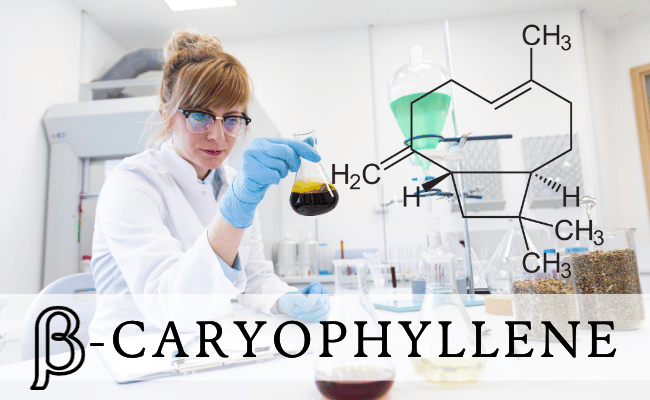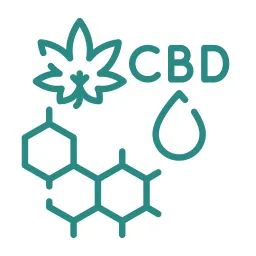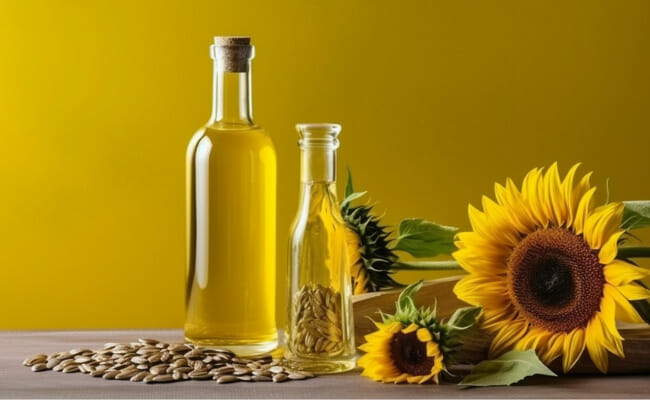Ever stood in the grocery aisle, staring at labels and wondering about the ingredients listed? You’ve probably encountered “linoleic acid” more than once and pondered its role in your diet. Think of it as the quiet hero in many everyday foods—oils, nuts, and seeds.
While it might seem like just another name in the small print, this omega-6 fatty acid plays a vital role in our health, from the cells that make up our bodies to the brain functions we rely on daily. Yet, like all heroes, it needs balance to work its magic best.
Consider this your guide to understanding one of the most essential fats in your diet.
What is Linoleic Acid?
Linoleic acid (LA), with a molecular weight of 280.4 g/mol1, is a polyunsaturated essential fatty acids that the human body cannot synthesize independently.
As an essential nutrient derived from the carbonyl functional group, this unsaturated omega-6 fatty acid, which presents as a colorless to straw-colored liquid, plays significant roles in various physiological processes.
It’s the parent fatty acid of the omega-6 series, often represented as ω-6, and serves as the primary dietary omega-6 fatty acid.
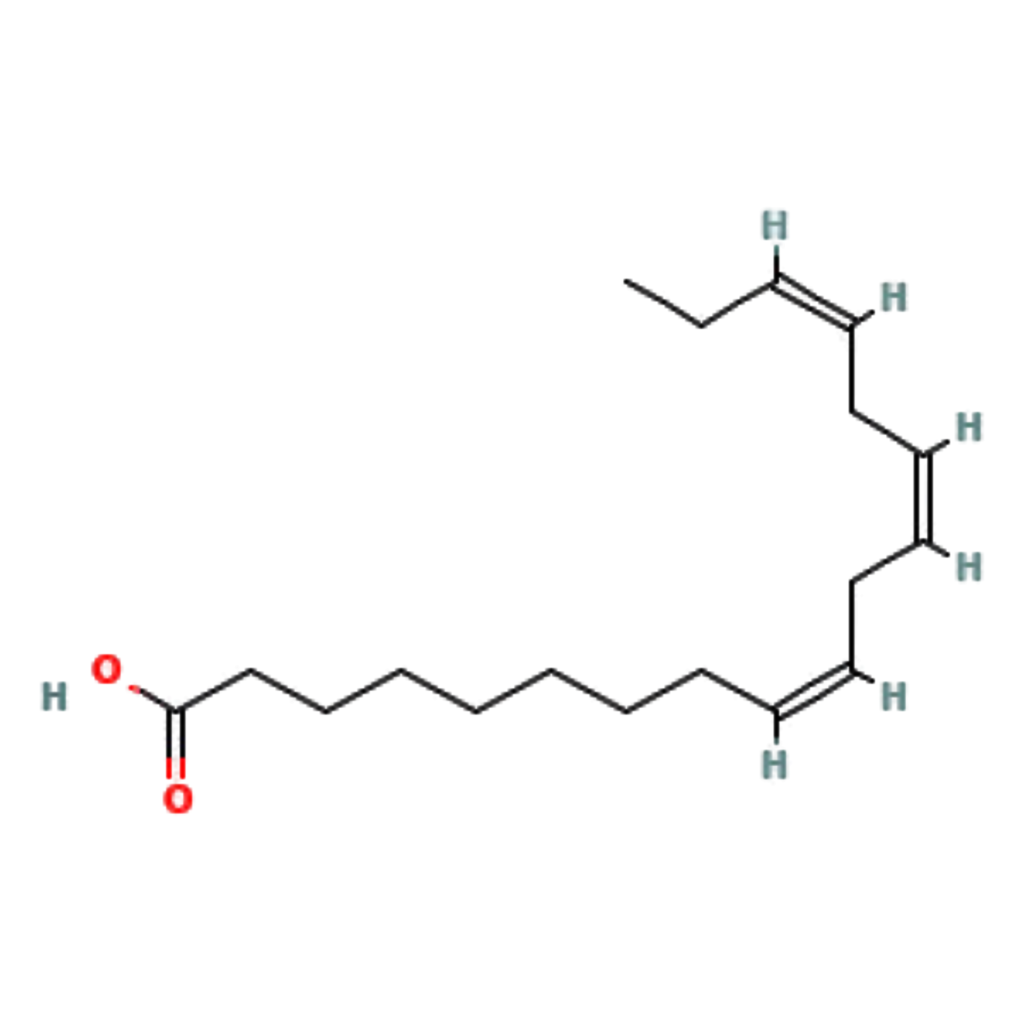
Importance in Human Physiology
Linoleic acid serves primarily two key roles in human physiology:
- Structural Components of Membranes: As a vital component, LA is incorporated into the phospholipid bilayer of cellular membranes, affecting membrane fluidity, function, and ion transport.
- Precursors of Eicosanoids: LA is metabolized into arachidonic acid, which subsequently forms eicosanoids. These local hormones—comprising prostaglandins, thromboxanes, and leukotrienes—participate in essential physiological functions like inflammation, blood clotting, and smooth muscle contraction.
Its distinguishing feature is the double bond located at the 6th carbon from the omega end, setting it apart from other fatty acids.
Benefits of Linoleic Acid
Linoleic acid isn’t just a nutrient; it’s a life enhancer.
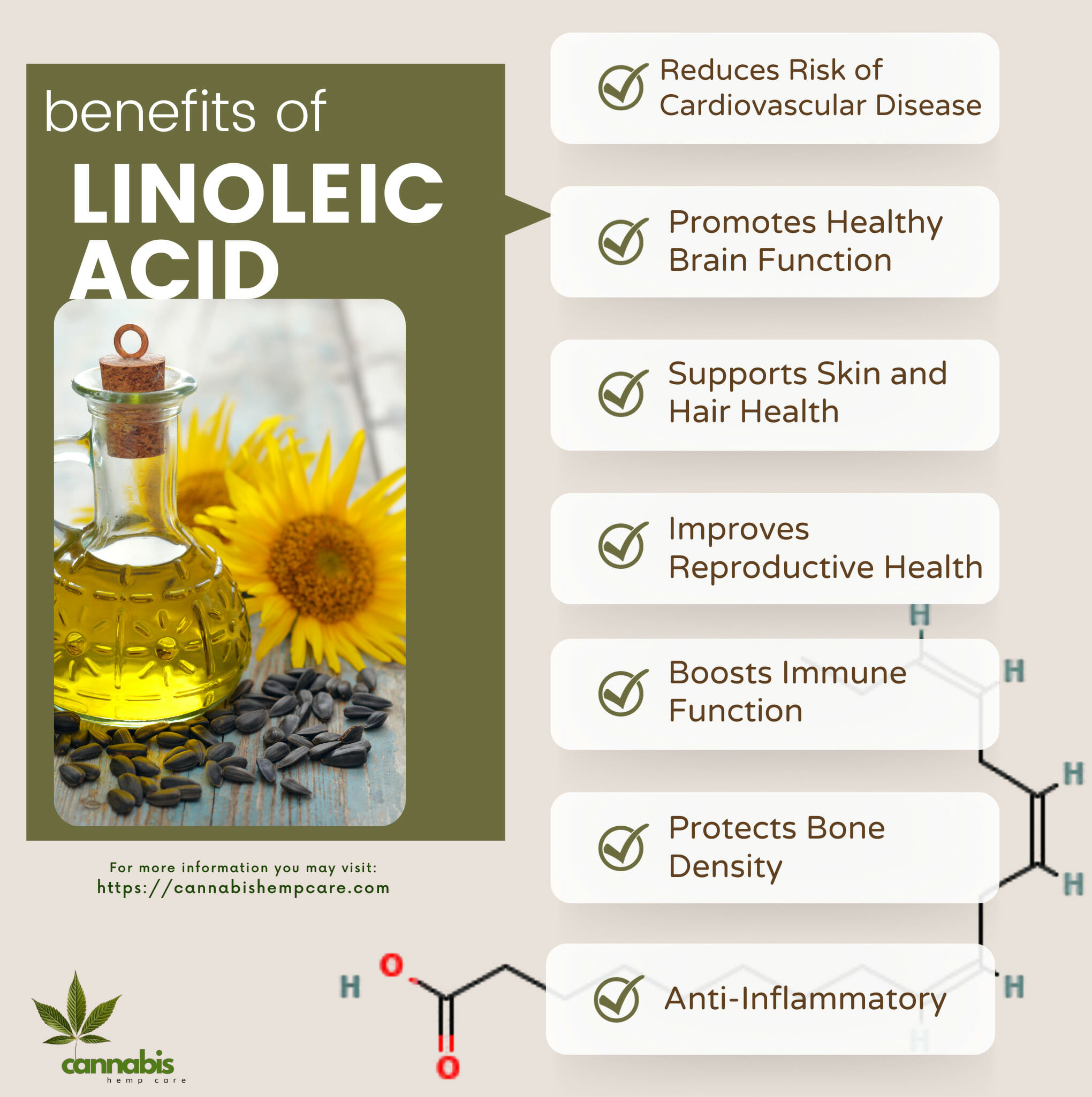
- Reduces Risk of Cardiovascular Disease2: By helping to lower LDL cholesterol, LA promotes a healthy heart and can diminish the threat of cardiovascular disorders.
- Promotes Healthy Brain Function: Essential fatty acids like LA play a pivotal role in cognitive health and neuronal function.
- Supports Skin and Hair Health: LA maintains the skin’s impermeability to water3, preserving its moisture, and aids in hair health, bestowing it with a lustrous sheen.
- Improves Reproductive Health: As a component of cell membranes, LA supports the reproductive system’s structure and function.
- Boosts Immune Function: Eicosanoids, derived from LA, are involved in immune modulation, enhancing the body’s defense mechanisms.
- Protects Bone Density: LA plays a role in calcium deposition in bones, aiding in maintaining their density and strength.
- Anti-Inflammatory: Metabolites of LA, especially arachidonic acid, exhibit anti-inflammatory effects.
Food Sources
Investigating the dietary origins of linoleic acid (LA), an essential omega-6 fatty acid, is pivotal to understanding nutritional intake.
This table provides a clinical breakdown of select food sources and their corresponding LA content4, shedding light on the significance of these dietary components in daily nutrition.
| Food | Serving | Linoleic Acid (g) |
|---|---|---|
| Safflower oil | 1 tablespoon | 10.1 |
| Sunflower seeds, oil roasted | 1 ounce | 9.7 |
| Pine nuts | 1 ounce | 9.4 |
| Sunflower oil | 1 tablespoon | 8.9 |
| Corn oil | 1 tablespoon | 7.3 |
| Soybean oil | 1 tablespoon | 6.9 |
| Pecans, oil roasted | 1 ounce | 6.4 |
| Brazil nuts | 1 ounce | 5.8 |
| Sesame oil | 1 tablespoon | 5.6 |
Understanding these food sources of linoleic acid (LA) can assist in optimizing dietary choices for better overall nutrition.
Intake Recommendations
The US Institute of Medicine, now the National Academy of Medicine, has set Adequate Intake (AI) recommendations for omega-6 and omega-3 fatty acids across various life stages and genders.
| Life Stage | Age | Source | Males (g/day) | Females (g/day) |
|---|---|---|---|---|
| Infants | 0-6 months | Omega-6 PUFA* | 4.4 | 4.4 |
| Infants | 7-12 months | Omega-6 PUFA* | 4.6 | 4.6 |
| Children | 1-3 years | LA# | 7 | 7 |
| Children | 4-8 years | LA | 10 | 10 |
| Children | 9-13 years | LA | 12 | 10 |
| Adolescents | 14-18 years | LA | 16 | 11 |
| Adults | 19-50 years | LA | 17 | 12 |
| Adults | 51 years and older | LA | 14 | 11 |
| Pregnancy | all ages | LA | – | 13 |
| Breast-feeding | all ages | LA | – | 13 |
These recommendations are essential for making informed dietary choices to promote health and well-being throughout life.
Best Practices for Storage and Consumption
Given linoleic acid’s vulnerability to degradation, it’s crucial to handle it with care:
- Purchase:
- Cold-pressed or Expeller-pressed Oils: These extraction methods do not use high temperatures, preserving the fatty acid’s integrity.
- Packaging: Opt for oils in dark bottles, which reduce exposure to light, a factor that can induce oxidation.
- Cold-pressed or Expeller-pressed Oils: These extraction methods do not use high temperatures, preserving the fatty acid’s integrity.
- Storage:
- Cool, Dark Place: Store oils rich in linoleic acid in a cool cupboard, away from direct sunlight.
- Refrigeration: Some oils, once opened, benefit from refrigeration. This slows down the oxidation process.
- Tight Seal: Ensure the oil container is tightly sealed to prevent exposure to oxygen.
- Culinary Use:
- Avoid High Heat: Polyunsaturated fats can break down at high temperatures. Use linoleic acid-rich oils in dressings, drizzles, or low-heat cooking rather than frying.
- Pair with Antioxidants: When using these oils in a dish, adding antioxidant-rich ingredients (like herbs, spices, or citrus) can further protect against oxidation.
- Avoid High Heat: Polyunsaturated fats can break down at high temperatures. Use linoleic acid-rich oils in dressings, drizzles, or low-heat cooking rather than frying.
By knowing the best practices for the consumption of LA, you can make the most of its health benefits while minimizing potential downsides.
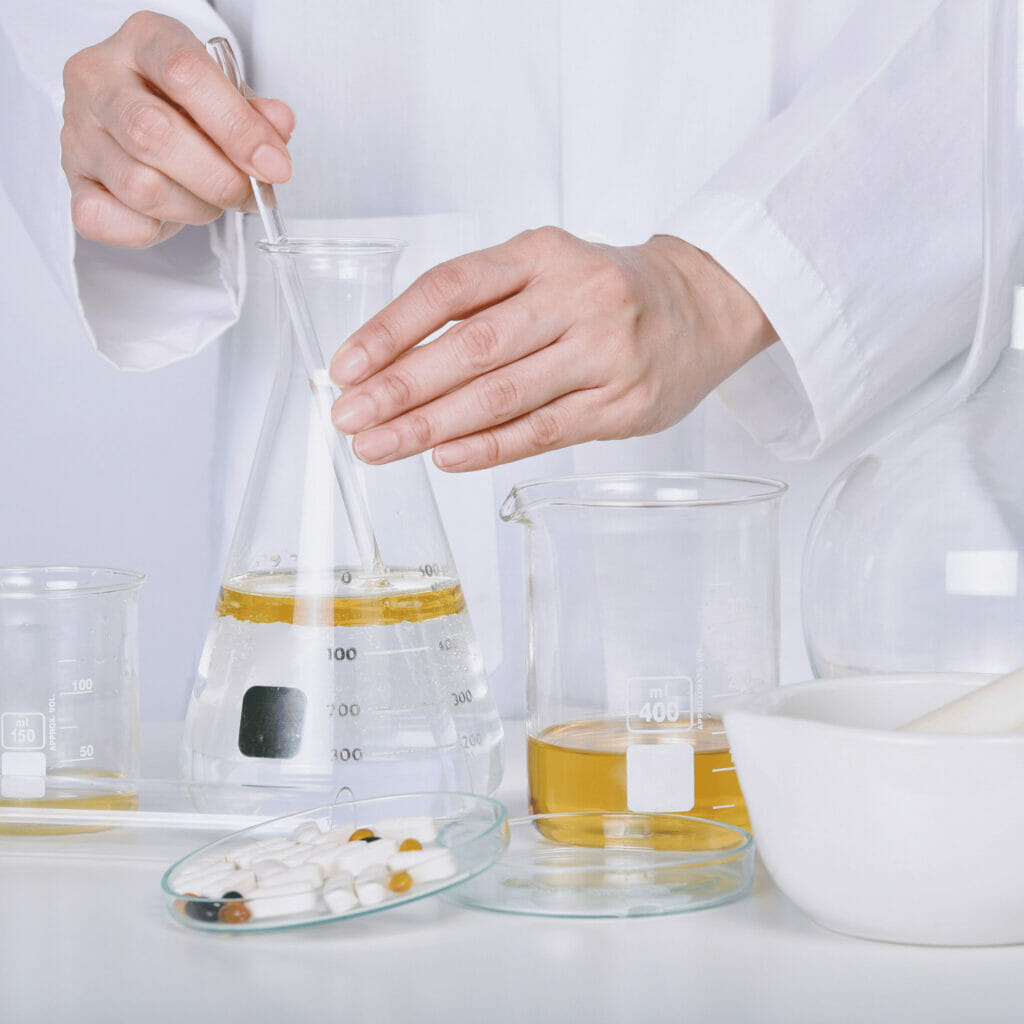
Risks and Precautions
- Potential for Imbalance in Fatty Acid Levels: While linoleic acid is vital to proper health, the disproportion between ω-6 and ω-3 fatty acids in the diet can throw off your fatty acid balance, exacerbating inflammatory processes and cardiovascular risk.
As a polyunsaturated fatty acid essential to the human diet, its sources include vegetable oils like safflower and sunflower oils, nuts, and seeds. However, excess intake without a balance of other fatty acids can lead to issues. The right balance ensures optimal health benefits while preventing potential drawbacks. - Consequences of Excessive Intake: An overabundance of LA, particularly in the absence of its omega-3 counterpart, can be deleterious. High levels can exacerbate inflammatory processes due to the overproduction of certain eicosanoids. Additionally, it may elevate the risk of certain cardiovascular conditions.
- Consequences of Deficient Intake: On the contrary, a dearth of LA can undermine its crucial physiological functions, such as maintaining the skin’s impermeability to water. Manifestations may include poor skin health, compromised barrier function, and an increased susceptibility to infections.
To maximize benefits like cardiovascular health, improved reproductive health, robust immune function, and optimized bone density, it’s vital to monitor and manage LA intake meticulously. It’s also imperative to acknowledge the potential anti-inflammatory effects and contributions of linoleic acid to brain function, skin, and hair health.
Interactions with Medications
Linoleic acid (LA), a polyunsaturated omega-6 fatty acid, can influence the pharmacodynamics of specific medications, affecting their therapeutic range and safety profile. Below are key interactions to consider:
| Medication Class | Mechanism of Interaction | Clinical Implication | Management Recommendation |
|---|---|---|---|
| Anticoagulant Drugs | LA potentiates the anticoagulant effect by inhibiting platelet aggregation and modifying clotting factors. | Increased risk of bleeding events such as gastrointestinal bleeding and bruising. | Monitor coagulation parameters like INR and consult healthcare providers for dose adjustments. |
| Antihypertensive Drugs | LA has vasodilatory properties that may augment blood pressure-lowering effects of medications like ACE inhibitors and beta-blockers. | Risk of excessive blood pressure reduction, potentially leading to symptoms like dizziness or fainting. | Regularly monitor blood pressure and consult healthcare providers for medication adjustments as needed. |
Patient-specific risk assessments and consultations with healthcare providers are indispensable for safe and effective management in both scenarios.
Synergistic Effects with Other Nutrients
LA does not work in isolation; its effects are intricately connected with other dietary nutrients, amplifying or balancing its health implications:
| Nutrient Synergy | Role in Health | Recommended Ratio |
|---|---|---|
| Omega-3 Fatty Acids | Omega-3 and omega-6 fatty acids are both precursors of eicosanoids. While omega-6-derived eicosanoids are primarily pro-inflammatory, omega-3-derived eicosanoids exhibit anti-inflammatory effects. | The ideal omega-6 to omega-3 ratio is still debated, but most experts recommend aiming for ratios between 4:1 and 1:1. |
| Vitamin E | No specific ratio is recommended, but adequate Vitamin E intake can support the body’s use of linoleic acid. | No specific ratio is recommended, but adequate intake of Vitamin E can support the body’s use of linoleic acid. |
| Zinc | This mineral is crucial for the activity of delta-6-desaturase, the enzyme involved in linoleic acid metabolism. | Adequate zinc levels are recommended for optimal enzyme function. |
Incorporating linoleic acid into your diet while considering its synergy with other nutrients, especially omega-3 fatty acids, vitamin E, and zinc, can enhance its positive impact on your health. Striving for a balanced intake of these nutrients can contribute to overall well-being.
Metabolism
The human body cannot synthesize linoleic acid and it must be obtained from external sources. Once ingested, it undergoes several enzymatic reactions.
Initially, delta-6-desaturase converts it to gamma-linolenic acid (GLA), which is metabolized to dihomo-gamma-linolenic acid (DGLA) and eventually to arachidonic acid. These metabolites are essential for forming eicosanoids, potent local hormones affecting various physiological processes.
- Conversion to Gamma-Linolenic Acid (GLA): LA, an essential ω-6 polyunsaturated fatty acid, undergoes a vital metabolic step: its conversion to gamma-linolenic acid (GLA). This biochemical transformation serves as the launching pad for various physiological processes pivotal for human health.
- Role of Enzyme Delta-6-Desaturase: The enzyme delta-6-desaturase plays a cardinal role in the metabolism of LA. This enzyme inserts a double bond into LA, facilitating its conversion to GLA. The efficacy and activity of delta-6-desaturase are contingent upon various intrinsic and extrinsic factors, underscoring its significance in the metabolic pathway.
- Conversion to Arachidonic Acid: GLA, once synthesized, doesn’t stagnate. It is further metabolized, undergoing an array of enzymatic reactions to form arachidonic acid. This unsaturated omega-6 fatty acid is a precursor for various eicosanoids, compounds of immense physiological relevance.
- Formation of Eicosanoids (Prostaglandins, Leukotrienes, Thromboxanes): Arachidonic acid is the key substrate for the synthesis of eicosanoids. These local hormones, including prostaglandins, leukotrienes, and thromboxanes, play multifaceted roles in the human body. They regulate inflammation, mediate pain and fever, and play critical roles in blood clotting and smooth muscle contraction.

Final Thoughts
Linoleic acid, as a polyunsaturated essential fatty acid, serves multiple crucial physiological roles and offers many health benefits.
Understanding its metabolism to arachidonic acid and its role in eicosanoid synthesis provides valuable insights into its comprehensive health implications. Given its essentiality for human health, adequate dietary intake is crucial.
However, like any nutrient, balance is key, as excessive intake can lead to adverse health outcomes.
FAQs
What does linoleic acid do for the body?
Linoleic acid (LA) reduces total and LDL cholesterol levels, contributing to improved heart health when consumed in appropriate amounts.
What is linoleic acid also known as?
Linoleic acid is also an omega-6 fatty acid, one of the two essential polyunsaturated fatty acids required in the human diet.
Is linoleic acid good or bad for you?
Linoleic acid is essential for the body, and it is generally considered beneficial when consumed in appropriate quantities. However, excessive intake of omega-6 fatty acids relative to omega-3s may lead to an imbalance, which should be avoided.
What oils are high in linoleic acid?
Oils high in linoleic acid include soybean oil, corn oil, and canola oil.
What foods have linoleic acid?
Linoleic acid is found in various foods, including vegetable oils, nuts, seeds, meats, and eggs, making it a naturally occurring component of many dietary choices.
Can linoleic acid help with skin health?
Linoleic acid has been associated with maintaining skin barrier function and hydration. It is sometimes used in skincare products for its potential benefits in promoting healthy skin.
What is the recommended daily intake of linoleic acid?
The recommended daily intake of linoleic acid varies by age and gender and is provided by authoritative sources like the US Institute of Medicine (now the National Academy of Medicine). These recommendations serve as guidelines for daily intake levels to support overall health.
Sources
- PubChem. “Linoleic Acid.” Nih.gov, PubChem, 2019, pubchem.ncbi.nlm.nih.gov/compound/Linoleic-acid. Accessed 20 Sept. 2023. ↩︎
- “Dietary Linoleic Acid and Risk of Coronary Heart Disease.” The Nutrition Source, 20 Nov. 2017, www.hsph.harvard.edu/nutritionsource/2014/11/05/dietary-linoleic-acid-and-risk-of-coronary-heart-disease/. Accessed 20 Sept. 2023. ↩︎
- “What Is Linoleic Acid?” News-Medical.net, 15 Apr. 2010, www.news-medical.net/health/What-is-Linoleic-Acid.aspx. Accessed 20 Sept. 2023. ↩︎
- Oregon State University. “Essential Fatty Acids.” Linus Pauling Institute, 6 Sept. 2019, lpi.oregonstate.edu/mic/other-nutrients/essential-fatty-acids. Accessed 20 Sept. 2023. ↩︎

